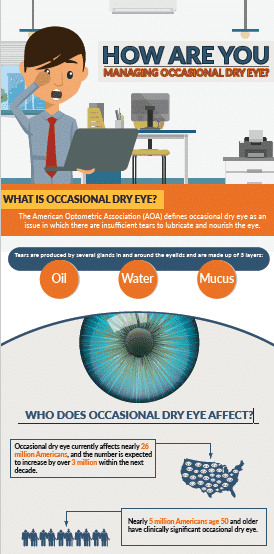OD Marketing Tips: Content Marketing 101
Posted by amess on Jun 28th 2018
We’ve gone over SEO and PPC advertising; the next suggestion to incorporate is utilizing content marketing – a.k.a. what you can use to build SEO and promote with PPC. Content marketing is defined as “a long-term strategy that focuses on building a strong relationship with your target audience by giving them high-quality content that is very relevant to them on a consistent basis.” Simply put: it’s using original content to draw in potential patients.
Why is Content Marketing Important?
Storytelling is one of the oldest and least expensive marketing tactics. It helps to deliver a persuasive message while giving search engines another piece to look at. This helpful information also helps to establish you as an expert in the eyes of potential patients.
Types of Content Marketing
Foundational (Pillar)
Foundational content is updated on a regular basis and should have the potential to be repackaged and/or re-promoted. This type of content lives on your site and should answer the question “How can we help readers and community?”.
Customer-Focused
Customer-focused content utilizes keyword research in the form of questions. This content type answers any potential question a patient may ask and helps to establish you as an expert.
Cyclical
Cyclical content covers current trends, events, news, and other topics that are relevant at the time. Newsjacking is a common term associated with this content and defined as “the process of injecting your brand into the day's news, creating a twist that grabs eyes when they're open widest.”
Crowd Pleasers
Crowd-pleasing content is highly involved and requires a lot of effort in the creation phase. Crowd pleasers also need to be published consistently (once a month), and they need to be relevant and emotionally charged. You want these pieces to hold high reader value, meaning they should be 2000+ words and include other types of content within.
Long-Playing
Long-playing content can be re-promoted either through related content (a series or linking back to it) or republishing existing content. Another form of long-playing content is content curation. This content can be regular publishing like columns that meet a certain schedule, occasional pieces to fill editorial needs or gaps, and epic content that’s created to support a specific marketing effort.
Content Formats
 This is an example of an infographic explaining occasional dry eye to patients.
This is an example of an infographic explaining occasional dry eye to patients.These are just a few of the options you have when creating content, but they each have their own purpose. Be conscious of your message when you choose what format you use.
- Blogs
- Infographics
- Whitepapers
- Videos
- Social media posts
- Lists
- Guides
- Research
- Webinars
Building Your Strategy: Where to Begin
The first thing to do is decide on a goal you’d like to achieve with your content marketing. The steps for developing a content marketing strategy include:
- Determine objectives.
- Decide your “one thing,” meaning what sets you apart.
- Set metrics to measure success.
- Define audience.
- Research audience needs.
- Create an execution plan.
- Create an amplification plan.
The easiest way to get started with content marketing is a blog. Already have one? Great! If you don’t, make one. A blog is easily updated and a great place to archive content for reuse.
If you’re having trouble finding somewhere to start, here are a few story suggestions:
- Tell the business origin story. People like to know how you got your start.
- Share customer stories. Past success stories add validity to your practice and can give potential patients confidence in your abilities.
- Share customer experiences on social media. This can be a double-edged sword because both good and bad experiences can be shared. Give patients a great in-practice experience and ask them to share on Facebook to create goodwill around your business.
- Share employee or company culture stories. This helps patients relate to you and your employees. You’re not just another eye care practice; you’re Jim and Ann who just got married.
To get started with the actual writing process on other story types, keyword research is imperative. This step is crucial to developing content that audiences want to read and learn about. You can also incorporate secondary keywords that are related to your initial keyword to help build SEO for your content; this is called Latent Semantic Indexing. While it is important to have your first and secondary keywords in your content, keyword stuffing is NOT recommended. Allow your content’s natural flow to build opportunity for keywords.
Get Writing!

After deciding on what topics and keywords to focus on, set a deadline for yourself. Having a hard date that your piece needs to be completed by helps keep you accountable for the creation. Then, many suggest detailing an outline to offer a roadmap of sorts when writing. Another important tip is to write first and edit later. If you constantly stop and criticize your work, it’ll be difficult to complete anything.
As you begin, keep your audience in mind and write simply. Try to keep paragraphs and sentences short (<20 words), but make sure you’re comprehensive in your explanations. You don’t want visitors to have questions that they need to leave your site to answer. Try to stay away from repeating yourself and using industry jargon, hyperbole, or passive voice. You can also add downloadable resources to help give your content added worth.
Getting started can be a daunting task. Hopefully, this post gives you some tips and tricks to help you begin your content marketing journey. In our next post, we’ll cover the vast digital world of social media marketing.
Photo on Visual Hunt
Sources
“7 Fantastic Internet Marketing Strategies for Optometrists.” WebpageFX, WebpageFX , www.webpagefx.com/industries/health/optometrist/.
Neely, Pam. “5 Simple Ways to Use Storytelling in Your Marketing.” Act-On Blog, Act-On Software, Inc., 1 Mar. 2017, www.act-on.com/blog/5-simple-ways-to-use-storytelling-in-your-marketing/.
Sailer, Ben. “40 Content Writing Tips to Make You a Better Marketer Now - CoSchedule.” CoSchedule Blog, CoSchedule, 31 Mar. 2017, coschedule.com/blog/content-writing-tips/.
Henneke. “How to Write Compelling Headlines: 47 Steal-Worthy Examples.” Enchanting Marketing, Enchanting Marketing Ltd., 2 Nov. 2017, www.enchantingmarketing.com/headline-formulas/.
Cohen, Heidi. “5 Core Content Types Every Marketer Needs To Succeed.” Heidi Cohen, Heidi Cohen, 29 May 2018, heidicohen.com/core-content-types/.
Baer, Jay. “7 Simple Steps to Improve Your Content Marketing Strategy.” Convince and Convert: Social Media Consulting and Content Marketing Consulting, Convince & Convert, LLC, 2018, www.convinceandconvert.com/content-marketing/marketing-strategy-steps/.
Patel, Neil. “Content Marketing Made Simple: A Step-by-Step Guide.” Neil Patel, I'm Kind of a Big Deal, LLC., 2018, neilpatel.com/what-is-content-marketing/.
Sherbin, Mark. “6 Newsjacking Tips for Branded Content.” Content Marketing Institute, UBM, 20 Oct. 2014, contentmarketinginstitute.com/2013/01/help-branded-content-use-news/.

